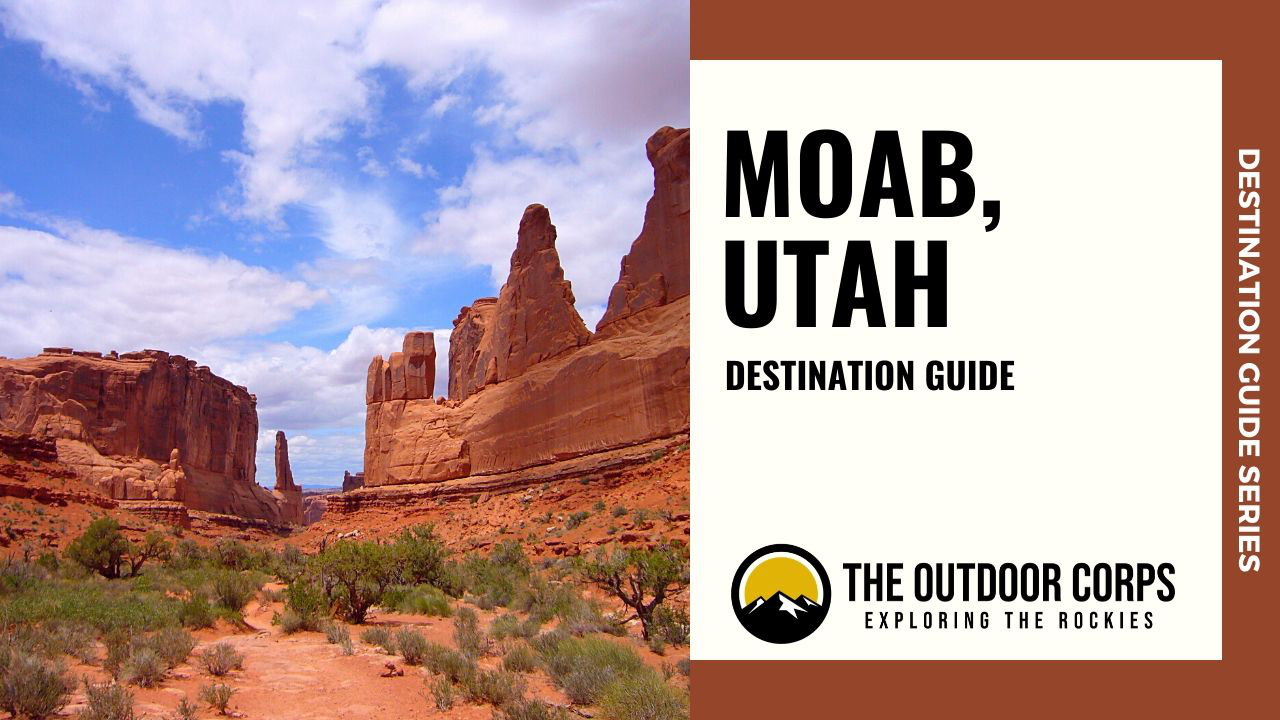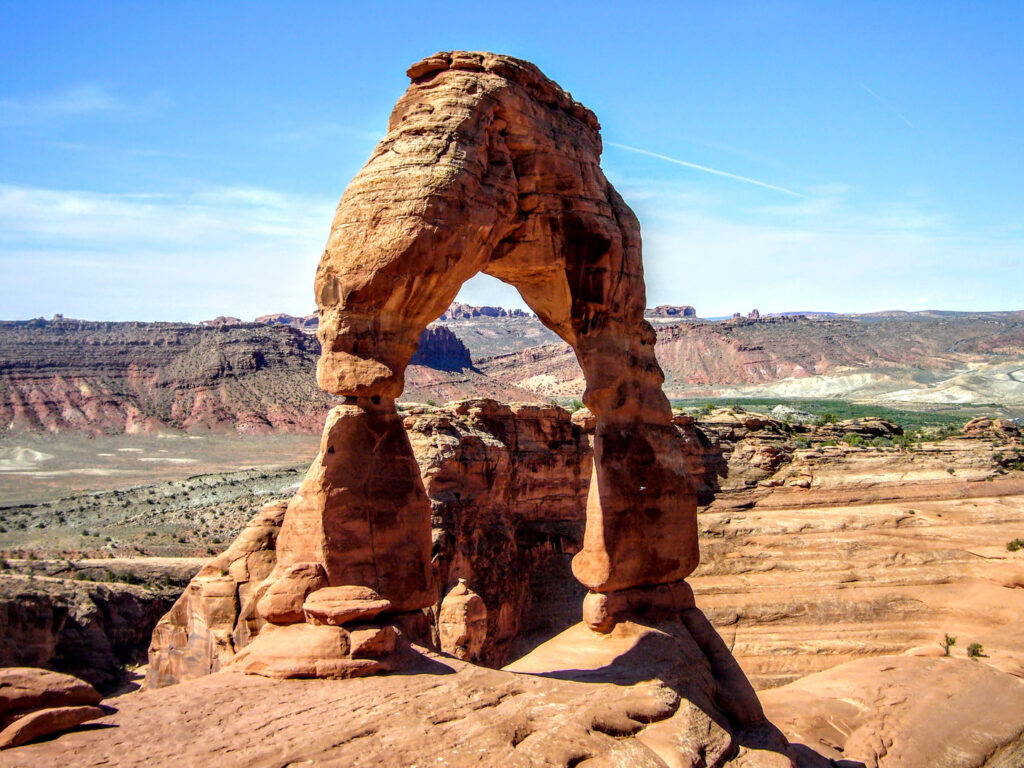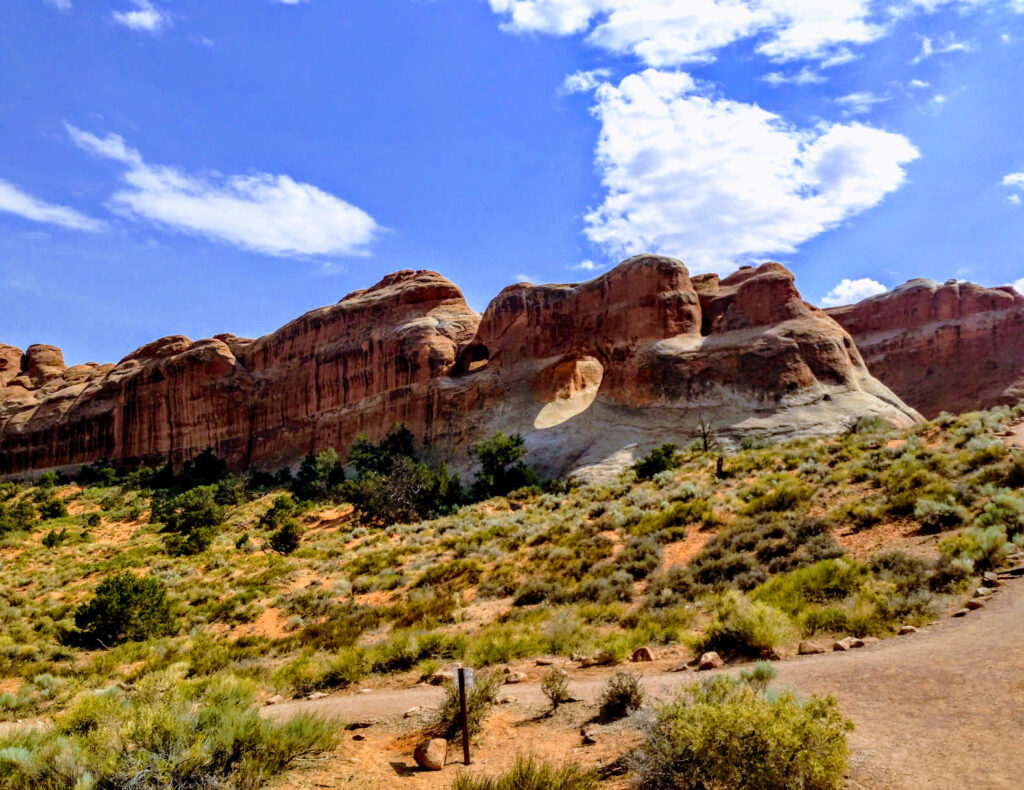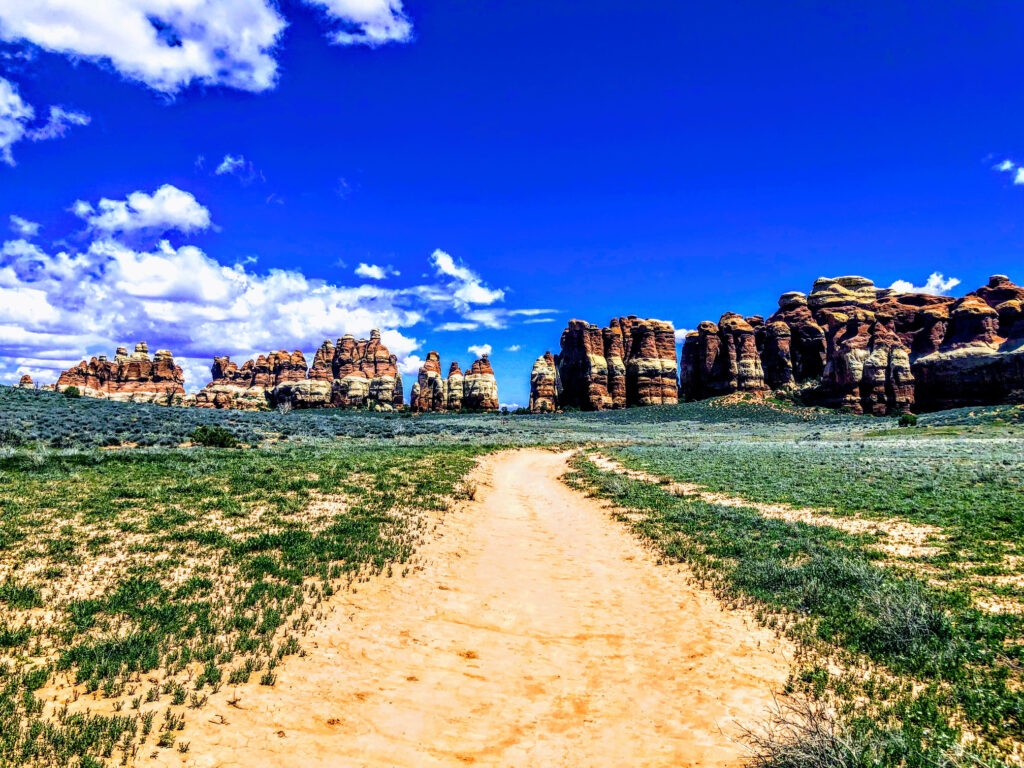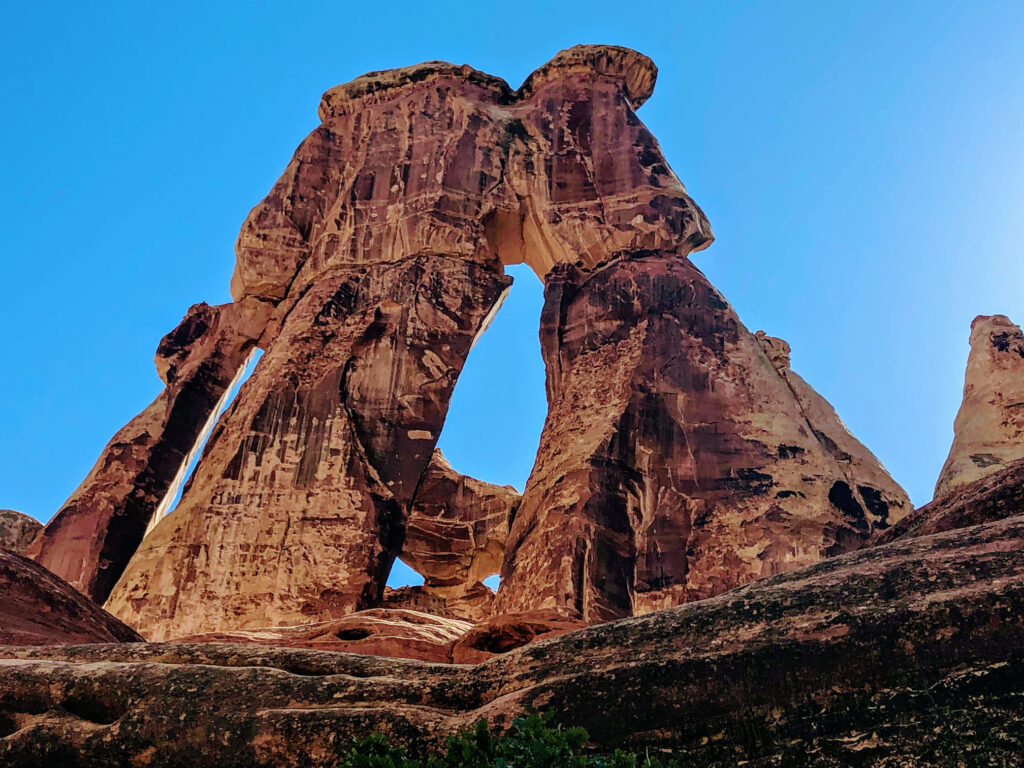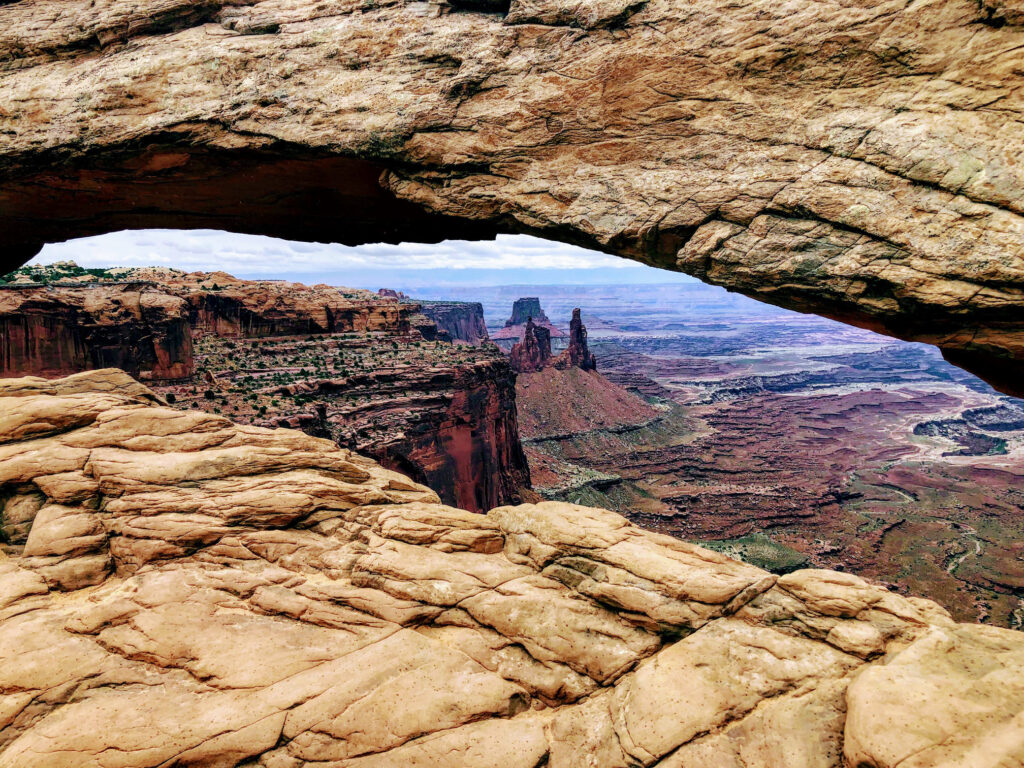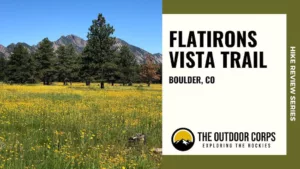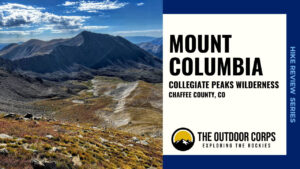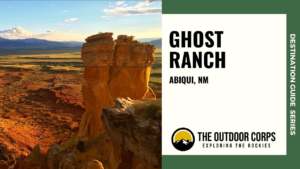Moab, Utah is a place everyone should have on their bucket list to visit at least once. And even once may not be enough. A visit here is less about the town of Moab itself and more about access to a remote red rock desert landscape that features endless opportunities for outdoor recreation. The town of Moab serves as a fantastic base camp for exploration into Arches National Park, Canyonlands National Park, trips on the Colorado River, or any other number of excursions that might suit your recreational appetite.
Yes, Moab is a tourist town and you should plan your trip accordingly if you want to avoid crowds and high lodging prices. In addition, it gets very hot in the summer (you’re in the desert after all). A trip here during the spring or fall is your best bet to comfortably enjoy all that Moab and the surrounding area have to offer.
Bottom line, a visit to Moab and the vast red rock wilderness is a must, particularly for hikers, rock climbers, mountain bikers, and rafters. As Edward Abbey, a famous and former resident of the Moab area, once said, “wilderness is not a luxury but a necessity of the human spirit.” In this article, we’ll provide you with some helpful planning tips to make your trip to Moab an epic adventure.
DESTINATION GUIDE SERIES: MOAB, UT
Why Should You Visit Moab?
The primary draw to Moab is the beautiful expanse of red sandstone geologic formations and its proximity to two majestic National Parks: Arches National Park and Canyonlands National Park. While the parks are a big attraction in the area, many other visitors are drawn to Moab due to premier mountain biking and 4×4 off-road trails. Equally popular are the endless opportunities for hiking/backpacking, rock climbing, and rafting.
Moab, as well as its vicinity, is a place that truly has something for everyone. It’s just as ideal for a family vacation as it is for the rugged outdoor adventurist interested in a multi-day backpacking trip in the desert.
Where Is Moab?
Moab is a town of roughly 5,500 residents in eastern Utah that sits on the Colorado Plateau at an elevation of 4,026ft. Although the town is small, Moab becomes a mega-tourist destination in the spring, summer, and early fall. Its proximity to Arches National Park and Canyonlands National Park makes Moab a premier base camp destination to explore the Utah desert.
Moab is particularly known for its red rock desert beauty, natural arch rock formations, and stunning canyons. Not far away from Moab is the La Sal Mountain Range, a subrange of the southern Rocky Mountains. In addition, Moab sits at the edge of the Colorado River, providing access to endless rafting/kayaking adventures.
Things to do
Arches National Park
Arches National Park is a national treasure. The iconic Delicate Arch is featured prominently on Utah license plates and is a sight not to be missed. The park has over 2,000 naturally formed sandstone arches. Popular areas of Arches National Park beyond Delicate Arch include Balanced Rock, Devils Garden, and the Fiery Furnace.
- Hours: Open year-round, 24hrs./day
- Entrance Fee: $30.00
- Recommended Attractions: Delicate Arch, Balanced Rock, Devil’s Garden, Fiery Furnace
- Permits: Backcountry camping is permitted in certain designated sites and zones within the park. To camp in the backcountry, you must purchase a permit in person at the Arches Visitor Center. Permits are issued up to seven days in advance of your trip. Also, if you plan to hike in the Fiery Furnace area, it is only accessible via a National Park ranger-guided tour or by purchasing a permit in person at the Arches Visitor Center. Permits are frequently difficult to obtain during the busy season, so make sure to get there early.
Canyonlands National Park
Canyonlands National Park is divided into three main districts: 1) Island in the Sky, 2) The Needles, 3) The Maze. A fourth district includes the Green and Colorado Rivers. You’ll need multiple days to cover all districts, if that’s what you decide to do.
- Island in the Sky: The most commonly visited of the districts, given its proximity to the town of Moab. Highlights include Mesa Arch, Grand View Point, Upheaval Dome, and White Rim Road.
- The Needles: This district is known for its sandstone pinnacles. You can get a good view of them from the Grand View Overlook in the Island in the Sky District, but we highly recommend you see them up close. Highlights include Druid Arch and Chesler Park.
- The Maze: This district is very remote and can take over 2.5 hours to get to from Moab. Horseshoe Canyon, just north of the Maze District, is the most popular hike in the area because of the life size rock art within the Great Gallery.
- Hours: Open year-round, 24hrs./day
- Entrance Fee: $30.00
- Recommended Attractions: Mesa Arch, Grand View Point, The Needles, Horseshoe Canyon
- Permits: Backcountry camping requires a permit. You can obtain permits in person at a visitor center or reserve permits online. The park also issues day use permits for off-road vehicles, motorcycles, and bikes on White Rim Road, Elephant Hill Road, Lavender Canyon Road, and Horse Canyon/Peekaboo. You can reserve day use permits online up to 24 hours in advance.
Dead Horse Point State Park
Dead Horse Point State Park is a popular alternative to the two National Parks in the area and is a great place to camp, hike, and mountain bike. The park features a stunning vista of Canyonlands National Park and the Colorado River.
- Hours: Open year-round, 6:00am-10:00pm
- Entrance Fee: $20.00
- Camping Fees: $40.00-$50.00
- Recommended Attractions: Intrepid Mountain Biking Trail System, Dead Horse Point Overlook
La Sal Mountains
If you’re looking to get out of the red rock desert for a bit of alpine mountain adventure, the La Sal Mountains are not far from Moab. The La Sal Mountains are part of the Southern Rocky Mountains and have a number of peaks over 12,000ft. — Mt. Peale being the highest at 12,721ft. If you are not interested in summitting a mountain, try the La Sal Mountain Loop drive where you will have amazing views of the valley.
Mountain Biking
Moab, and the surrounding area, is a mountain biker’s paradise. No adventure to Moab is complete without riding on one of the many slickrock mountain bike trails in the area. There are trails for the novice to the advanced mountain biker. Perhaps the most popular is the Slickrock Trail, which is technically difficult. Check out Poison Spider Bicycles for rentals if you’re not bringing your own bike. They also offer a great overview of some of the trails in the area here.
Colorado River
If you ever dreamed of whitewater rafting or kayaking on the Colorado River, Moab is a great place for it. Stunning scenery through huge red rock canyons and an adventure of a lifetime. A number of outfitters in the area offer guided excursions on the Colorado. We like Red River Adventures for the trips they offer.
Planning Tips
Best Time To Visit
- The Outdoor Corps Recommendation: Spring or Fall
- The best time to visit Moab is in the spring so you can enjoy more moderate temperatures. Other travelers have a similar idea, so it will be busy. Campground spots may be hard to come by and lodging may be pricey, particularly around Memorial Day through June. But, late September and October are also excellent months to visit. These months have fewer crowds than later spring, but you do get the sense of things starting to slow down, particularly as you progress into late October.
Getting There
- FLYING
- Moab does have a small airport (Canyonlands Field Airport) offering round-trip flights between Moab and Denver, CO.
- However, tickets can be fairly pricey. If you intend to fly, we suggest flying into Salt Lake City, UT or Denver and renting a vehicle (preferably a 4×4 for more fun!) to drive to Moab. The road trip is part of the fun, particularly when driving through the Rocky Mountains via I-70 W from Denver.
- DRIVING
- From Salt Lake City, UT, expect about a 4-hour drive by exiting the city via I-15 S, driving the majority of the way via US-6 E, and arriving in Moab via I-70 E and US-191 S.
- From Denver, CO, expect about a 5-hour drive via I-70 W. You’ll be on I-70 W for a little over 300 miles and turn onto US-191 S to reach Moab.
Dining
- Honestly, Moab does not have a ton of great dining options, but there are certainly a few diamonds in the rough. Our favorite dining establishment is Love Muffin Café, for either breakfast or lunch. It’s just one of those places that we continue to go to each time we visit Moab and we can always count on them for a great to-go packed lunch that we pick up before we head out on the trail. Of course, there is also the tried-and-true Moab Brewery. Not necessarily our favorite brewery of all time, but it is a good place to grab a pint and relax. The food menu is decent and the beer is cold.
Lodging
- Lodging in Moab can demand premium prices depending upon the time of year you plan to travel there. It’s best to plan ahead far in advance so you can book the accommodations that you want and/or need. Of course, this also applies to campsites as well – those spots book faster than you would think!
Guide Services & Tours
- Moab has an amazing number of talented guides and tour companies that cater to a wide variety of recreational activities. If you’re headed to Moab during peak season, you should have no issue finding a suitable and reputable tour company for whatever fits your interests.
Pets
- Given the possibility of extremely warm temperatures, hot pavement, and the risk of dehydration/heat exhaustion, we highly recommend not bringing your pet. In any event, pets are not permitted on hiking trails or in the backcountry within the national parks. Pets are permitted in some park campgrounds.
Weather Forecast
- If you are particularly sensitive to extreme heat, please be mindful of the time of year you opt to visit (summer is hot!). Always, no matter the time of year, ensure you have an adequate supply of water to stay hydrated. Protect your skin from sunburn by using sunscreen and proper protective clothing.
REcommended Books
The Outdoor Corps prides itself on curating lists of some of the best books out there on a given subject. Within our lists, you’ll find carefully selected books that aim to enhance your experience of the area, rather than just an arbitrary listing of any book that covers the subject at hand.
Below is a listing of books about Moab and its vicinity, including what we think is the best travel guide on the area (Moon), a few recreation guides (for hiking, climbing, and mountain biking), as well as a few area-specific naturalist books (on flora, fauna, and geology).
- Moon: Arches and Canyonlands National Parks
- Technical Slot Canyon Guide to the Colorado Plateau
- Non-Technical Canyon Hiking Guide to the Colorado Plateau
- Utah’s Incredible Backcountry Trails
- Hiking from Here to Wow: Utah Canyon Country
- Classic Desert Climbs
- High on Moab: Moab Climbs
- Best Climbs Moab: Over 150 of the Best Routes in the Area
- Moab, Utah: A Travel Guide to Slickrock Bike Trail and Mountain Biking Adventures
- Wildflowers of the Mountain West
- Woody Plants of Utah
- Shrubs of the Great Basin
- Sibley Birds West: Field Guide to Birds of Western North America
- Canyonlands Country: Geology of Canyonlands and Arches National Parks
- Roadside Geology of Utah
- A Naturalist’s Guide to Canyon Country
- Desert Solitaire
Disclosure: Please note that this post contains affiliate links. We may receive a small commission if you buy a product or service through an affiliate link. This revenue helps us provide readers with helpful content to plan amazing adventures.

